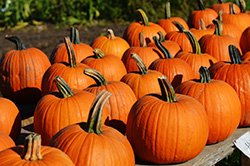Mapping Your Way to a Great Thesis or Dissertation
Before you write your thesis, you'll probably have to write a thesis proposal. But what is a thesis proposal? Think of it as the roadmap. The thesis proposal lays out how you're going to get from point A, an unformed idea, to point B, a thoroughly researched and comprehensive exploration of that idea.
What's more, you're going to have to submit this roadmap to your professors, advisors, and/or a committee. They will evaluate it to make sure that you know where you're going, that you have the correct route marked out, and that you have all the tools you need to get there. Further, they'll determine whether this is the right journey to take, as they don't want to send out a search party if you end up lost in the dunes of an intellectual desert.
So your map had better be good. (No pressure!)
Your thesis proposal will require research, preparation, and a clear vision of your final destination. A thesis proposal is typically structured around a number of common sections, each of which will help you lay out the plans for your project. We'll look at each section in turn.
Title Page
 The title page contains basic identifying information (the author's name, mentor's name, institution department, date, etc.), and a descriptive title for the thesis that helps describe the proposed project.
The title page contains basic identifying information (the author's name, mentor's name, institution department, date, etc.), and a descriptive title for the thesis that helps describe the proposed project.
As Halloween is fast approaching, let's use the following example topic to demonstrate each aspect of a thesis proposal:
- A Brief History of Halloween and the King of Gourds: A Study of Pumpkins, Horror Symbolism, and Why Rats Like the Color Orange
Abstract
The abstract provides a brief summary (typically fewer than 200 words) of your proposed thesis. It should generally provide an introduction to the topic (a brief history of pumpkins and jack o' lanterns), the key statement of the paper (Halloween would cease to exist without the pumpkin), how you will address the issue (an exploration of pumpkins in history and literature), and the implications of your work if completed successfully (a reinvigoration of pumpkinology).
Table of Contents
The table of contents should list all the headings and subheadings for your thesis proposal, providing page numbers for each to ensure swift navigation through the proposal.
Introduction
The introduction sets the context of your thesis and must capture your reader's interest. This is where you explain the background of your topic and the relevant research, starting from a broad perspective and then narrowing down to your thesis statement, citing sources along the way.
- Spooky faces were first carved into pumpkins by rats (who were living in these scooped-out gourds), though inferior imitations were later produced by humans. After rats brought the Black Death, plague fears were connected with pumpkins, which were used to ward off spirits of the newly deceased in an attempt to control fears of illness, death, and the apocalypse. Jack o' lanterns soon became common Halloween talismans throughout the world.
Key Questions
These are the main questions you are trying to answer in your thesis. The questions should provide a focus and direction for the proposed study, guiding you toward your intended results.
- What is the symbolism of the pumpkin? Why are pumpkins scary? Why do rats live in pumpkins? Why are pumpkins orange?
Literature Review
A literature review includes a brief but precise explanation of the sources you intend to use in your research. It outlines their significance and indicates your current knowledge base and your future goals in terms of the research, if relevant.
- The Pumpkin King (Skellington et al., 2006) explores the monarchy's longstanding relationship with pumpkins and provides a vital link between rat plagues, horror symbolism, and the politicization of the pumpkin.
Methodology
The methodology is a description of the methods you will be using in the paper to answer your key questions. This could include theoretical approaches, analytical frameworks, philosophies, formulas, equations, or experiments.
- Textual criticism within a Marxist, feminist, and deconstructionist framework will be used to analyze the mytho-perception of pumpkins throughout human history, as evidenced in various works of world literature, with a Freudian approach adopted for an analysis of the rat–pumpkin symbiosis.
Conclusion
This is where you explain the expected results of your research, its possible contributions to the field, and the methods that will be used to ensure validity and accuracy. This is usually followed by a thesis proposal summary, which restates and specifies the goals of the study.
- Pumpkins are a vital Jungian symbol of the subconscious mind's desire to transform and control feelings of fear and horror and of the human need to know the unknowable. The field of pumpkinology will be greatly expanded by this study, and fellowship with rats will be supported and expanded, heralding a new age of plague-free companionship.
Bibliography
This is a reference list of all works used in the writing of the thesis proposal, following the particular style guide requested.
- Skellington, J., Burton, T., King, S., and Hawthorne, N. (2011). Nightmares and dreamscapes: Pumpkins, rats, and symbols that go bump in the night. The Journal of Gourds and Rodentia, 47(2), p. 666.
And there you have it: a quick map to writing a thesis proposal! You have a big challenge ahead of you, but with a little planning and hard work, it can be done. Still uncertain of the process? Send your thesis proposal or dissertation to the editors at Scribendi for a thorough review.
Image sources: StockSnap.io, Alexas_Fotos/Pixabay.com









